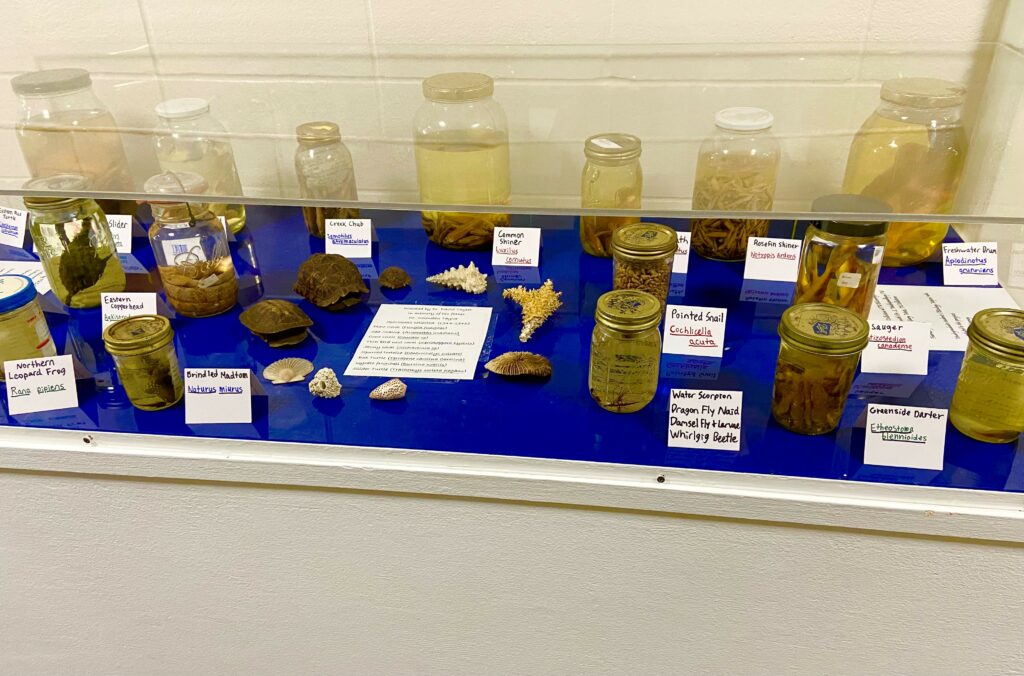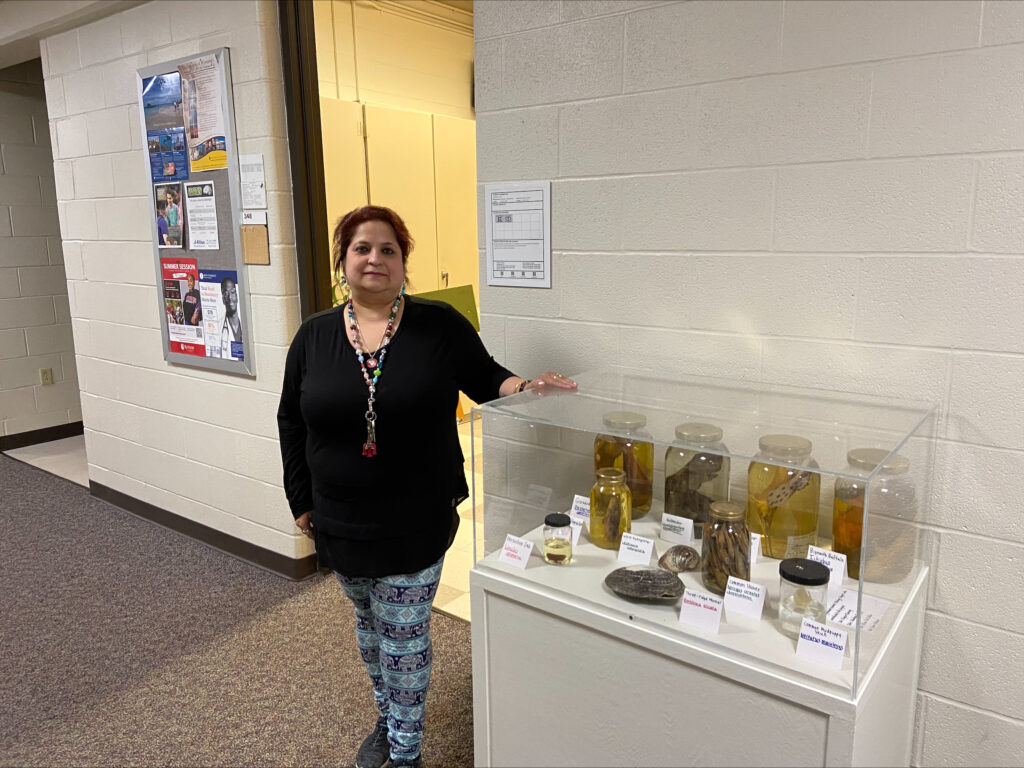By Steven Krolak, special to IU Southeast
(New Albany, IN) — IU Southeast’s collection of gars, hellbenders, darters, and other native local species is about to go global.
It’s all part of the Collections Management System Unification and Elevation Project, an ambitious initiative of IU Collections that will digitize IU’s vast holdings–50 million objects from more than 200 individual collections—and make them accessible online.
IU Southeast is playing a special role, joining Bloomington, Indianapolis and system-wide collections in the project’s initial cohort.
For Dr. Suparna Mukhopadhyay, lecturer in biology and director of IU Southeast’s collection, the project is the culmination of a journey that began in 2018.

Back then, she was appointed curator of the biology department’s zoological resources, a jumble of specimens, photos, and documentation representing 60 native species, mostly fish collected in the 1970s by IU Southeast instructors Dr. Claude Baker and Dr. Bill Forsyth, but never systematically assessed.
Mukhopadhyay had a vision for the collection that went beyond jars collecting dust on a shelf: She wanted to make the specimens part of her students’ learning journey.
She designed a curriculum involving high-impact practices in first year courses and received grants from the American Association of State Colleges and Universities (AASCU) and the Bill and Melinda Gates Foundation to implement it. While student researchers Kaycee Ranney and Madison Combs cataloged fish and mussels, first-year students performed real research using real specimens.
For her extraordinary concept and flawless execution, Mukhopadhyay was named Faculty Innovator of the Year in 2019 by ILTE.
She also came to the attention of the newly formed IU Collections, which was sufficiently impressed with her student-centered approach to include specimens from IU Southeast in its first exhibition.
“We really want to demonstrate the significance of the collection, as the majority of the specimens were collected by and with students and are actively and–now with Suparna Mukhopadhyay’s efforts–routinely incorporated into the undergraduate curriculum,” said Gary Motz, head of technology, at the time.
Fast-forward to 2023, and IU Southeast’s collection figures prominently in IU Collections’ new initiative.
According to Motz, the current priority is the creation of a collections management system that can accommodate objects ranging from art to zoological specimens like those at IU Southeast.
Students are playing a key role. Mukhopadhyay supervises three student assistants: Brittany Eckler, a graduate student of information and library science at Bloomington, and IU Southeast undergraduates Alena McMillan and Isaac Minton.
“This project demands a certain type and level of skills in areas such as organization, determination, teamwork, and care,” said Minton, a secondary education major from New Albany with a focus on biology.
“The desired outcome for this project is for anyone, anywhere, to be able to view and explore the more than 50 million objects held in trust by Indiana University and to search this online catalog of all 200-plus collections of artwork, objects, and specimens,” Motz said.

He and McMillan, a biology major from New Albany, catalog the holdings, entering each specimen’s scientific and common name, and the location, date, state, and county of collection, as well as the name of the collector, into an Excel spreadsheet.
Mukhopadhyay gives McMillan and Minton the freedom to work at their own pace and to choose which specimens and documents to catalog.
“It promotes the sense of independence without the stress of traditional independent research,” Minton said.
It also leaves plenty of room for wonder.
McMillan was surprised by the scope of the collection, which also includes reptiles, amphibians, and mammals. She was also impressed by the variety of documentation going back decades, which enables a deeper understanding of ecosystem change over time.
“This collection is extremely valuable because it can tell us so much about the Blue River,” McMillan said. “Some of the species that were found in the 1960s and 1970s are no longer found there.”
For Minton, the full scope of this project is much larger than it appears.
“At first glance it may seem as though we are just digitizing the information found on the note cards,” Minton said. “But not only are we digitizing this information for the entire science community, but we are also presenting it to our fellow students to hopefully inspire them to branch out and discover the natural history of the land.”
Motz expects the online platform to go live with the first 50,000 objects as early as February 2024. But IU Southeast students can get a sneak preview in the biology department, where a set of new display cases donated by IU Collections contains a selection of specimens, courtesy of Mukhopadhyay’s efforts to make the collection accessible to all.


